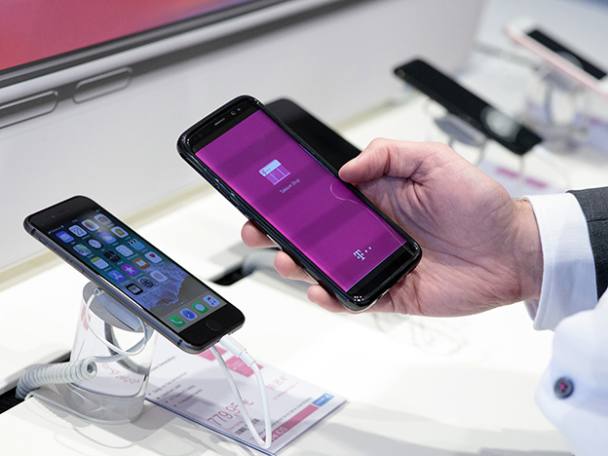- 2010s were the decade of the smartphone
- Wearbales and augmented reality (AR) could dominate by the late 2020s
This month Samsung Electronics (KR:005930) released its newest smartphone, the S21. The device, which is its 21st model, is the latest in a series since the first Samsung Galaxy S was launched in 2010. Over the past decade, the Korean manufacturer – the only serious competitor for Apple's (US:AAPL) iPhone in the smartphone space – has managed to put out a new phone every year, each with an incremental improvement on the last. In the past 14 years, Apple has released 20 new models of the iPhone that Steve Jobs first unveiled back in 2007.
It is not so surprising that the companies have been able to milk these devices. As more networks entered the market, affordable contracts cropped up and phones themselves were more competitively priced, the 2010s were, undoubtedly, the decade of the smartphone. Almost 4bn of us across the world have them in our pockets, equivalent to around 48 per cent of the global population.
But reviews of the new S21 should give us reason to rethink whether or not that can continue into the 2020s. “The phone itself is so iterative...that if you go play with a Galaxy S20 Ultra, you will have the same basic experience. There are so few substantial changes, so far as the ordinary consumer is concerned,” said David Ruddock, the editor of Android Police on the This Week In Tech podcast. With Samsung’s S range getting slimmer, faster, with stronger battery life and better cameras, the question remains: how else, and for how long, can the smartphone improve?
At Apple, they have yet to release a phone with 120 Hertz (Hz) display, which makes the user experience smoother, unlike a number of Android competitors. This is widely expected to be the next ‘new’ feature for the iPhone 13. And there is still demand for their new 5G-enabled devices, which will only grow as they progressively become cheaper and telecom infrastructure develops. At time of writing, a rush in Christmas sales is expected to culminate in a record $100bn in revenue in Apple’s latest quarter.
But before the 5G factor, iPhone sales were in steady decline, forcing the world’s most valuable company to move away from its core product and push into consumer services like streaming.
Some argue that this strategic shift marked the beginning of the end of Apple’s reign supreme in devices – but they are forgetting its fast-growing ‘wearables’ division, which includes the likes of Apple watches and AirPods, the wireless earphones.
These devices are usually bought to compliment the use of the central iPhone. But the wearable division holds more promise in its own right. Apple is making early developments in virtual reality (VR) and augmented reality (AR): some reports suggest that the company is already working on a VR headset that features external cameras and a fabric shell, run on a bespoke operating platform codenamed “rOS”. While the developers are still allegedly trying to make sure that the device does not overheat, a rumoured 2022 release date gives them some time to smooth out the kinks. Apple is also working on its own AR glasses, which are reportedly still in the early ‘pre-prototype’ stage and are probably at least a few years away from launch.
But the iPhone maker is not the only one to have cottoned onto AR and VR as the next hot tickets in consumer tech. Investors are flocking around AR developments at Snap (US:SNAP), whose stock has more than doubled in the past year, after it launched 15 different AR products and functionalities in just the first nine months of 2020. The company, which owns the social media app Snapchat, also quietly acquired a British AR-focused start-up, Ariel AI, towards the end of last year.
Meanwhile, Facebook (US:FB) has announced a partnership with EssilorLuxottica (FR:EL), which owns the Ray-Ban brand, to release its first pair of smart glasses in 2021. The social media giant said that its employees will start wearing its ‘Project Aria’ glasses in public in September: a research device that will capture video, audio, eye-tracking and location data that it can use to further develop its smart glasses for consumers.
Competition has already started to heat up. While wearable AR is still in its early stages, compare the phone in your pocket to the one you owned in 2011. They are probably oceans apart. It is not unreasonable then to expect that Silicon Valley can achieve that same rate of development this decade, too. As the smartphone begins to stagnate and new avenues for growth look sparse, big tech companies look like they are making AR the next phase in our daily tech.











